Optimise your sports injury recovery and prevention with insights from the experts who work with elite athletes.
The term ‘sports injury’ refers to injuries that are sustained due to participation in a sport or exercise activity, involving some sort of damage to an area of the body.
The damage sustained with a sports injury usually, but not always, generates a pain experience. The pain experience is normally the primary method for how we perceive and interpret the damage that’s occurred to the body.
Sports injuries are referred to as an acute injury or chronic injury, primarily based on their onset, duration and underlying causes.
When an injury is caused by a specific event or trauma it is termed an acute injury.
Acute sports injuries occur suddenly, often during physical activity or sports participation.
Acute injuries typically have a rapid onset and are relatively short-term in nature.
Acute injuries are commonly the result of traumatic events, such as falls, collisions, twists or direct impacts to the body.
Acute sports injuries include sprains, strains, fractures, dislocations and bruises (medically known as contusions).
Symptoms may include sudden pain, swelling, bruising, limited range of motion and difficulty bearing weight on the affected area.
When an injury is caused by several events over an extended period of time it is termed a chronic injury.
Chronic sports injuries develop gradually over time and are often related to repetitive stress or overuse of specific body parts.
Chronic injuries persist over an extended period, sometimes becoming recurrent or long-lasting.
These injuries typically result from repetitive movements, improper training techniques, inadequate rest or recovery, biomechanical imbalances or underlying structural issues.
Common chronic sports injuries include tendinopathies (e.g. tendonitis), stress fractures, muscle strains and overuse syndromes (e.g. runner's knee, tennis elbow).
Symptoms of chronic injuries may include persistent or intermittent pain, stiffness, swelling, weakness, decreased performance and discomfort during physical activity.
Sports injuries can vary widely in type and severity, depending on the activity, individual factors and mechanism of injury. Here are some (of the many) common types of sports injuries:
Sprains involve the stretching or tearing of ligaments, which are the tough bands of tissue that connect bones at a joint. Ankle sprains are particularly common in sports.
Strains occur when muscles or tendons are stretched or torn. They can affect any muscle or tendon in the body, commonly occurring in the hamstrings, quadriceps and groin.
Fractures are breaks or cracks in bones. They can be minor hairline fractures or more severe, involving displacement of bone fragments.
Stress fractures are tiny cracks in bones that develop from repetitive stress or overuse. Stress fractures often occur in weight-bearing bones of the lower extremities, such as the shinbone (tibia) or bones of the foot.
Dislocations happen when the ends of two connected bones are forced out of their normal position at a joint. Common dislocations occur in the shoulder, fingers and knee.
Contusions (a medical term for bruises) are caused by direct blows to the body that crush underlying muscle fibres and connective tissue without breaking the skin.
Tendonitis (also known as tendinitis) is inflammation or irritation of a tendon, the thick cord that attaches muscle to bone. Tendonitis can develop from repetitive movements, overuse or sudden increases in training intensity. Common sites of tendonitis include the achilles tendon, rotator cuff, and elbow (tennis elbow).
Concussions are traumatic brain injuries resulting from a blow to the head or body that causes the brain to move rapidly within the skull. Concussions are relatively common in contact sports compared to non-contact sports.
Muscle cramps are sudden, involuntary contractions of one or more muscles, often caused by dehydration, electrolyte imbalances or muscle fatigue.
Meniscus is a type of cartilage that provides shock absorption between bones. Meniscus tears occur in the cartilage of the knee joint, often due to twisting or sudden movements. Therefore, they tend to be more common in sports like football or basketball.
Bursitis is inflammation of the bursae, small fluid-filled sacs that cushion and lubricate joints. Bursitis can occur from repetitive motion, pressure or direct trauma to a joint. Common sites of bursitis include the shoulder, knee, elbow and hip.
Understanding the different types of body tissues involved in sports injuries is essential for the accurate diagnosis, treatment planning and rehabilitation needed to promote optimal recovery and return to activity.
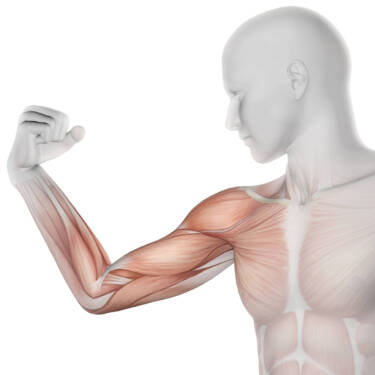
Muscles are soft tissues responsible for generating force and movement in the body. Sports injuries can involve muscle strains, tears, or contusions (bruises) due to overstretching, overloading or direct impact.
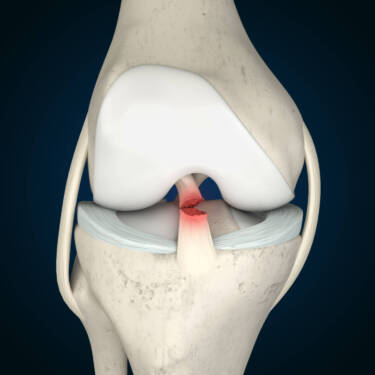
Ligaments are tough, fibrous bands of tissue that connect bones to other bones at joints, providing stability. Injuries to ligaments, known as sprains, can occur when they are stretched or torn due to sudden or excessive force, leading to joint instability.
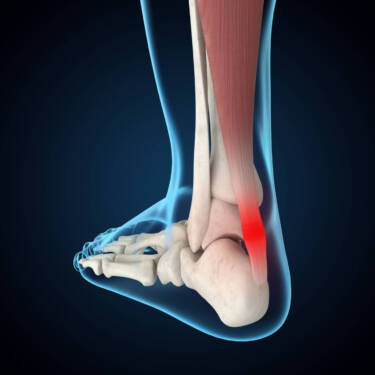
Tendons are strong, flexible bands of connective tissue that attach muscles to bones, allowing for movement. Tendon injuries, such as tendonitis or tendon tears, can result from overuse, repetitive stress or sudden trauma.
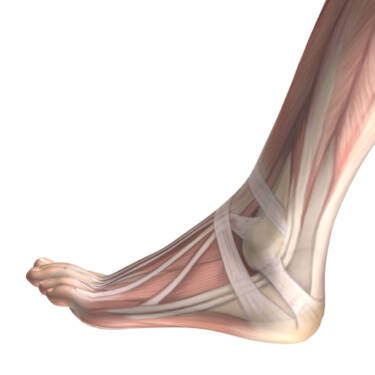
Tendon sheaths are protective coverings surrounding tendons, reducing friction and allowing smooth movement. Injuries to tendon sheaths, such as tenosynovitis, can result from repetitive motion, causing inflammation and pain.
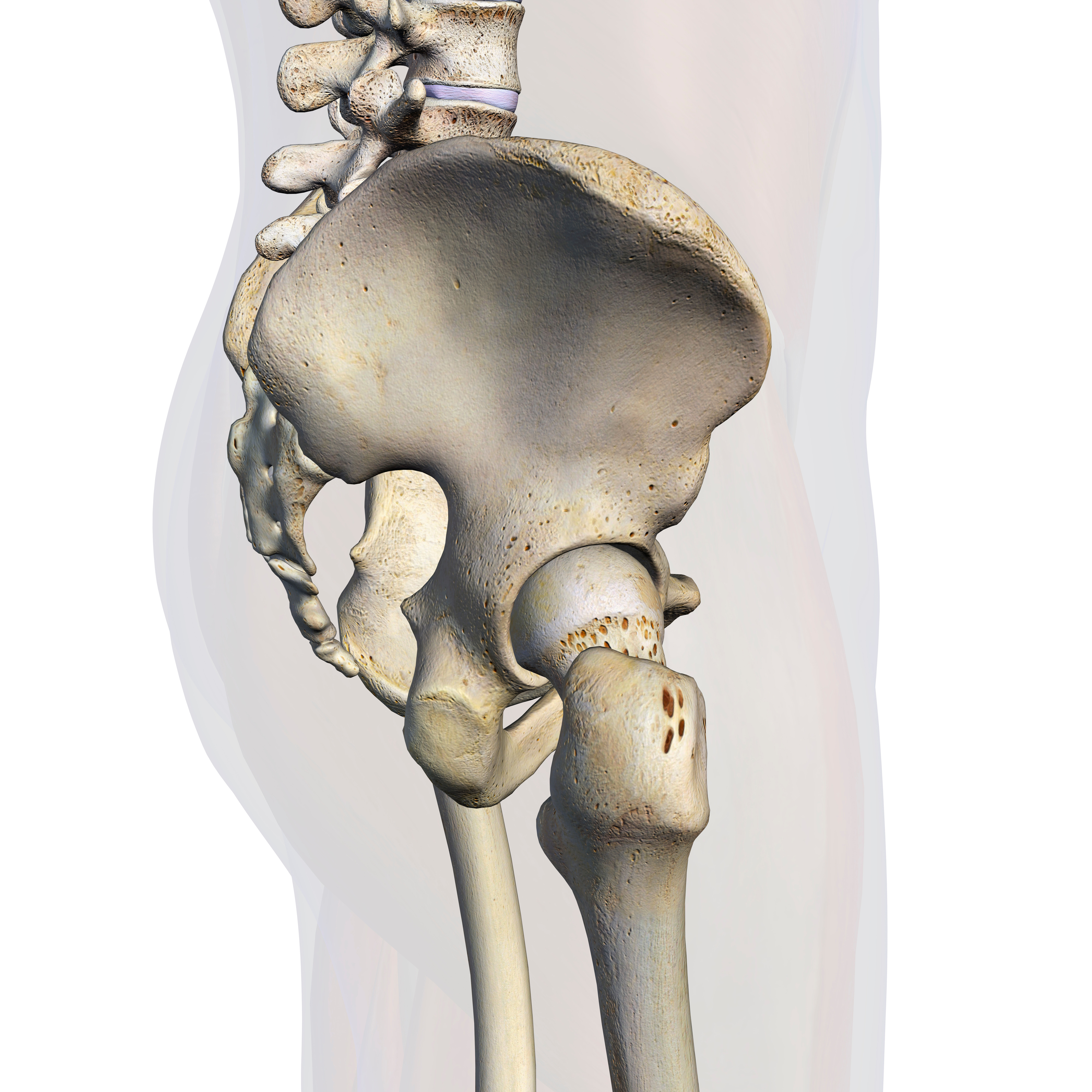
Bones provide structural support, protect internal organs and serve as attachment points for muscles and ligaments. Sports injuries can cause fractures (breaks) or stress fractures (hairline cracks) in bones due to direct impact, twisting or repetitive loading.
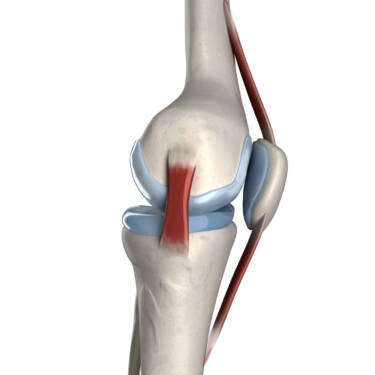
Cartilage is a tough, flexible connective tissue that covers the ends of bones in joints, providing cushioning and facilitating smooth movement. Injuries to cartilage, such as meniscus tears or articular cartilage damage, can occur due to twisting, sudden movements or degenerative changes.
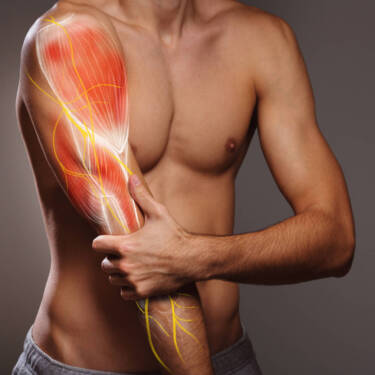
Nerves transmit signals between the brain and other parts of the body, allowing for motor control and sensory perception. Sports injuries, such as nerve compression or traction injuries, can occur due to direct trauma, stretching or compression, leading to pain, numbness or weakness.
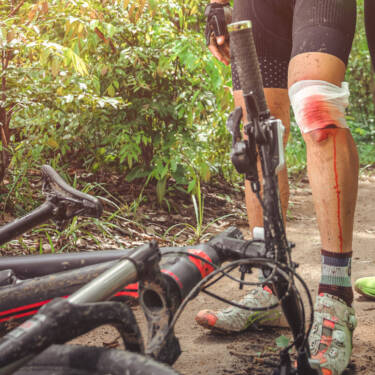
The skin is the body's largest organ, providing protection against external threats and regulating temperature. Sports injuries can cause abrasions, lacerations, or contusions (bruises) to the skin, increasing the risk of infection or delayed healing.
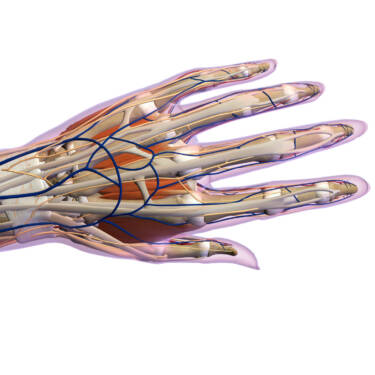
Blood vessels, including arteries, veins and capillaries, supply oxygen and nutrients to tissues and remove waste products. Sports injuries may damage blood vessels, resulting in bruising, swelling or bleeding (hematoma).
Direct impact, collisions, falls or contact with equipment or other paticipants can cause acute injuries such as fractures, dislocations and contusions (bruises).
Repetitive motions, excessive training or inadequate rest can lead to overuse injuries, such as stress fractures, tendonitis and muscle strains. Overuse injuries often develop gradually over time due to cumulative stress on tissues.
Incorrect form, improper equipment use or biomechanical flaws in movement patterns can increase the risk of injury by placing excessive strain on muscles, tendons, ligaments or joints.
Muscle weaknesses, tightness or imbalances in strength and flexibility can alter biomechanics and predispose athletes to injury by affecting joint stability and movement patterns.
Insufficient physical conditioning, including inadequate strength, endurance, flexibility or cardiovascular fitness, can increase the likelihood of fatigue-related injuries during sports activities.
Environmental conditions such as extreme temperatures, slippery surfaces, poor lighting or uneven terrain can contribute to accidents or injuries during sports participation.
Ill-fitting or worn-out equipment, improper footwear or lack of protective gear can compromise safety and increase the risk of injury during sports activities.
Individual factors such as age, gender, genetics, body composition and underlying medical conditions can influence susceptibility to certain types of sports injuries.
Sudden increases in training intensity, frequency or duration without adequate progression or recovery time can overload tissues and lead to injury.
Physical and mental fatigue can impair coordination, reaction time and decision-making, increasing the risk of accidents or injuries during sports participation.
Stress, anxiety, lack of focus or distraction can affect concentration and coordination, increasing the likelihood of errors or accidents leading to injury.
Having awareness of when the body doesn’t feel and look as it normally does can help identify a potential sports injury. There are a number of simple indicators that can be used.
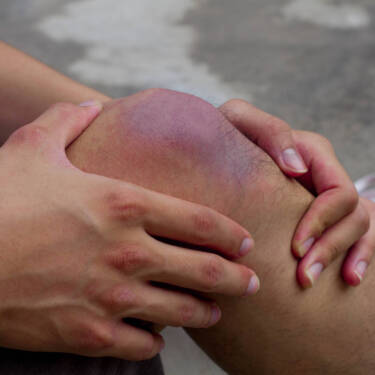
If there's some change in coloration to the area of the body, if there's some redness, it's often a sign of inflammation.
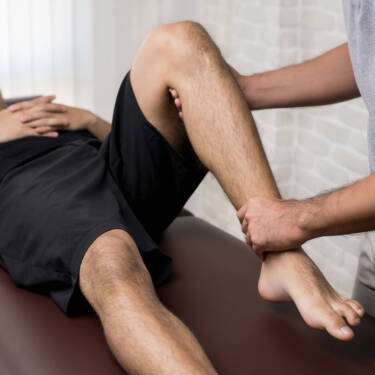
Whilst stiffness is a common part of general aches and pains, a reduction in normal range of motion can indicate an injury.
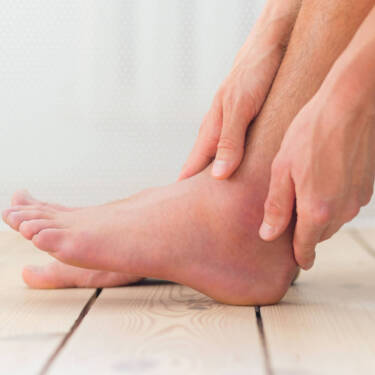

If there's swelling around the area, it often signals there may be some acute damage to that area of the body.
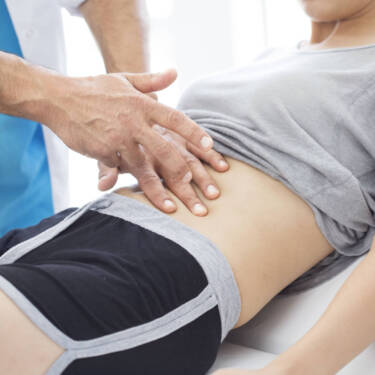

If an area of the body is more sensitive to touch and movement than normal, it can be a indication that something isn't quite right and needs further investigation.
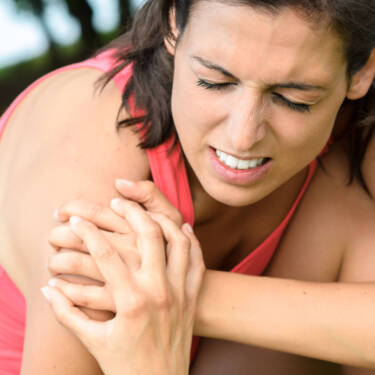

Intense pain can, of course, indicate injury but pain doesn't always indicate injury. Likewise, even serious injury can occur with no pain.
The way that we perceive any type of injury is through the pain experience, how we feel something.
Everybody has a different way of interpreting what they feel and it’s based on many different factors, including:
So there’s many different factors that give an enhancement or, conversely, reduce the pain experienced.
How do we know when a pain experience is due to general aches and pains, or wear and tear – when the body doesn’t feel 100% but we’re able to push through with our activity – versus something that shouldn’t be ignored and needs attention?
General aches and pains are normal. If it’s something that eases with movement and exercise, that can just be the body’s interpretation of stiffness in a joint or just an increase in sensitivity.
Generally there’s nothing to be alarmed about if aches and pains feel better with exercise. Often that’s the case and it’s a good thing to maintain that movement.
The body likes being exposed to exercise, it likes load. It’s good for our overall well-being, emotional status and health, which reduces stress and, in turn, can actually decrease sensitivity of the pain experience.
When something is intensely giving pain and it inhibits function then it should be checked out by an appropriate medical professional.
Likewise, if there has been a traumatic incident that is known to have caused an injury, a history of trauma in the area concerned or there's something specific that can be pinpointed and the pain levels are high, it's a good idea to get medical help.
Often, injuries aren't obvious, so if there is any cause for concern it's best to get a diagnosis from a medical professional.
As discussed earlier, sports injuries are referred to as an acute injury or chronic injury, primarily based on their onset, duration and underlying causes.
When an acute sports injury occurs, the body undergoes a series of physiological responses aimed at managing the damage, initiating the healing process and restoring normal tissue function.
When a chronic sports injury occurs, the body undergoes a series of adaptive responses and pathological changes that differ from those seen in acute injuries. Chronic sports injuries typically develop gradually over time due to repetitive stress, overuse, or biomechanical imbalances, leading to tissue damage and dysfunction.
Upon injury, the body’s pain receptors are activated, usually (but not always) leading to immediate pain at the site of injury. Simultaneously, the body initiates an inflammatory response characterised by increased blood flow, swelling and warmth in the affected area.
Inflammation is the body’s natural defence mechanism to protect and repair injured tissues.
If the injury involves damage to blood vessels, the body forms a blood clot to stop bleeding and prevent excessive blood loss. Blood platelets (specialised blood cells responsible for clot formation) gather at the site of injury and release clotting factors to form a temporary plug.
In response to tissue damage, the body releases various signalling molecules, such as cytokines and growth factors, to recruit immune cells and initiate the repair process.
White blood cells migrate to the injured area to remove debris and pathogens, while fibroblasts produce collagen (the main structural protein in connective tissues) to lay down new tissue.
As inflammation subsides, the proliferative phase begins, marked by increased collagen formation and tissue rebuilding. Fibroblasts produce a collagen-rich matrix that provides structural support and scaffolding for tissue regeneration. Blood vessels grow into the injured area to supply oxygen and nutrients essential for healing.
The final phase of healing, known as the remodelling phase, involves the gradual maturation and remodelling of newly formed tissues. Collagen fibres realign along lines of stress and excess scar tissue is gradually broken down and replaced with functional tissue.
This phase can last for weeks to months, depending on the severity and type of injury.
During the healing process, rehabilitation plays a crucial role in restoring function, range of motion, strength and proprioception (joint awareness). Physical therapy, exercise, stretching and gradual return to activity help rebuild injured tissues, improve mobility and prevent re-injury.
In some cases, acute sports injuries may lead to complications.
Proper medical evaluation, diagnosis and treatment are essential to minimise complications and optimise outcomes.
The body’s response to an acute sports injury involves a complex interplay of inflammatory, reparative and remodelling processes aimed at restoring tissue strength and function.
Effective management and rehabilitation strategies can help facilitate healing, reduce pain and promote a safe return to sports and physical activity.
Chronic sports injuries often result from cumulative microtrauma or repetitive stress on specific tissues, such as muscles, tendons, ligaments or bones. Over time, repeated stress and inadequate rest or recovery can lead to tissue breakdown, degeneration and structural changes.
While acute inflammation is part of the healing process in acute injuries, chronic sports injuries may involve persistent low-grade inflammation in affected tissues. Chronic inflammation can contribute to tissue damage, pain and impaired healing, disrupting normal tissue function and repair mechanisms.
In response to chronic stress or overuse, the body undergoes adaptive changes and tissue remodelling to cope with increased demand or load. These adaptive responses may include thickening of tendons or ligaments, muscle hypertrophy (increase in size and strength) or atrophy (decrease in size and strength), changes in joint mechanics or alterations in bone density.
Chronic sports injuries often manifest as persistent or recurring pain, stiffness, weakness and functional limitations that interfere with athletic performance and daily activities. Pain may be localised to the site of injury or referred to surrounding tissues due to altered biomechanics or nerve irritation.
Chronic sports injuries can have psychological effects on athletes, including frustration, anxiety, depression and reduced motivation. Prolonged pain, disability and limitations in sports participation may negatively affect an athlete’s mental health, self-esteem and quality of life.
Chronic sports injuries can impair athletic performance by limiting range of motion, strength, power, flexibility, agility or endurance. Athletes may experience decreased speed, accuracy, coordination and overall athletic ability, impacting their competitive performance and training effectiveness.
Untreated or poorly managed chronic sports injuries can lead to complications.
(tendinosis)
(due to compensatory movement patterns)
Proper medical evaluation, diagnosis and treatment are essential to minimise complications and optimise outcomes.
Effective management of chronic sports injuries requires a multifaceted approach focused on addressing underlying biomechanical factors, optimising tissue healing, managing symptoms and preventing recurrence.
Long-term management strategies may include lifestyle modifications, injury prevention programs, ongoing monitoring and periodic reassessment of treatment goals.
Muscle hypertrophy is the growth of muscles through exercise.
This typically occurs in response to strength training or resistance exercise, where muscles are repeatedly stressed or overloaded, leading to microscopic damage to muscle fibres.
In response to this damage, the body repairs and rebuilds the muscle fibres, resulting in increased muscle size and strength over time.
Muscle atrophy is the shrinking or wasting of muscles due to lack of use or other factors.
This can occur due to factors such as lack of exercise, injury, illness or aging. When muscles are not regularly used or subjected to stress, they begin to shrink and weaken due to the loss of muscle fibres and protein breakdown.
Understanding the severity of sports injuries is crucial for athletes, coaches and healthcare professionals for effective injury prevention, treatment and recovery strategies.
You can have a contact injury that causes some damage but the forces behind it are not that great, versus a non-contact injury where the forces behind it are much greater and cause more damage. But that can be in reverse too.
You can have a non-contact injury which has got low forces, low damage, versus a contact injury that can be high forces and high damage.
Contact versus non-contact doesn’t equate to the severity of injury.
The severity of an injury depends on the mechanism.
So non-contact versus contact doesn’t equate to the severity of an injury, it’s more about the actual mechanism of that injury itself – the speeds that are occurring, the forces that are being applied with traumatic injuries and the location.
Different types of tissue have different types of blood supply and different types of healing responses and physiological healing times.
Usually, if it’s a muscle injury for instance and it’s in the belly of a muscle, that will usually heal quicker than if it’s in the muscular tendinous junction (where the muscle meets the tendon) versus the tendon itself.
It’s possible to have a smaller injury to the tendon which might take a lot longer than the same size injury in a muscle.
The injury location within body tissue impacts severity.
The 5th metatarsal bone in the foot is notoriously difficult to heal, having low blood flow.
Severity can vary depending on the body tissue type affected.
For instance, a bone injury, such as fracture, generally takes a lot longer to heal than a muscle injury.
Different tissues have different healing times as well as different parts of the tissue itself. For example, whether it’s the muscle tendon attachment or the tendon itself, needs to be considered.
The way that someone experiences pain initially for an injury does not necessarily equate to the damage that’s occurred, the type of injury and the time that they’re going to be out.
For example, a football player might roll their ankle and immediately be in a lot of pain. They get stretchered off and an MRI reveals an ankle sprain that recovers in a week or two.
Conversely, a player who’s walking off the pitch, doesn’t seem to be in that much pain, is touching the back of his or her leg, maybe the top of the hamstring.
An MRI scan later shows that they have a proximal hamstring strain and it’s actually all a tendon involvement, with an 8 to 12 week recovery time.
Our pain response in the moment might not equate to the level of damage.
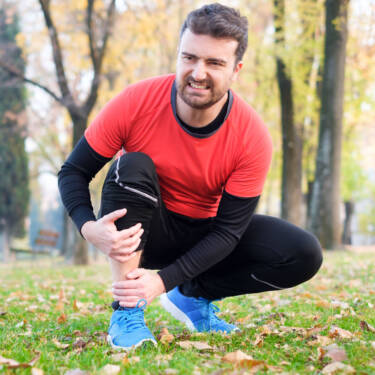

If it's, say, a muscle type injury or a sprain, if there's a lot of pain walking, that's always a sign of severity.
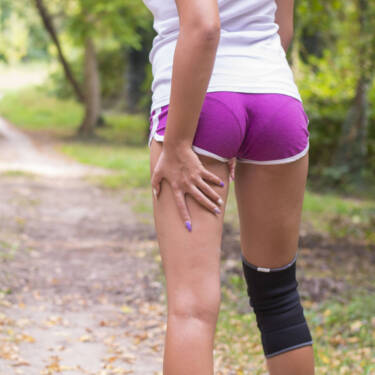

If somebody's feeling it on low level activities quite intensely then that usually indicates a bit more severity.
If they only really feel it when digging fingers in and palpating it, or when using the muscle with resistance, it usually indicates less severity.



If the injured person has got big restrictions in their range of motion, that can be a sign where they need to go and get it checked out.
When an athlete suffers an injury, knowing how to respond effectively is crucial for minimising further damage, promoting optimal recovery and facilitating a safe return to sport.
The management and treatment of acute and chronic injuries can differ significantly.
Acute injuries often require immediate first aid, rest, ice, compression, and elevation (RICE) followed by appropriate medical evaluation and rehabilitation.
In contrast, chronic injuries may necessitate lifestyle modifications, corrective exercises, physical therapy and addressing underlying contributing factors to promote healing and prevent recurrence.
Take care to protect the injured area from being knocked or put into stressful positions. Doing so is likely to be painful and potentially cause more damage.
Offload and rest the injured area for a few days to give it a chance to settle and begin the healing process - the body is pretty good at telling us what we can and can't do.
Cooling the area can help with reducing swelling and inflammation or just facilitate the inflammatory process.
Cycles of 10 to 15 minutes on and 1 to 2 hours off are generally effective and safer than longer periods of continuous ice application.
Care should also be taken to not put ice on an area for too long, because that can have detrimental effects too.
Of course, ice should never be applied directly to the skin. An alternative to a purpose made ice pack is using something like a bag of frozen peas wrapped in a thin cloth or bucket of cold water if it’s the ankle.
A compression wrap or bandage can be applied to help control swelling.
Care should be taken to not over tighten it and must be loosened if any numbness, tingling or change of skin colour is experienced.
Elevation is often recommended to help reduce the pooling of fluid in the injured extremity or joint.
If possible, elevate the injured area above the level of the heart to help reduce any throbbing pain and swelling.
Additionally, anti-inflammatory medication, like ibuprofen, can be helpful with managing inflammation and pain.
In more severe cases, prescription medication can also help with reducing the pain sensitivity from the inflammation.
The RICE protocol is an acronym commonly used to remember four key steps for the early management of an acute injury:
The PRICE protocol is an acronym commonly used to describe the steps of the RICE protocol, with the addition of protection of the injured area of the body:
Usually the inflammatory process of something that is injured resolves after two or three days and that’s when things should settle down.
If the injury hasn’t settled within two or three days, it might be worth getting it checked out by a medical professional.
For an acute injury, begin with cooling for the first few days to help reduce inflammation and swelling.
During this early stage it's best to avoid heat as it's going to increase blood to that area. It might feel good in the moment, but then afterwards it could have a negative impact on the injury. If it's an acute injury, then there's normally bleeding in that area or it's already inflamed, so heat may increase the inflammation.
For an injury that's chronic, so it's gone past that initial inflammatory phase, then it might be helpful to start adding a little bit of heat.
Provide a contrast to the site of the injury by alternating between heat and cold applications.
Around a week past the injury mark, it might help to add more heat because that then starts to increase the blood supply to the area and that's what we want during that phase of healing.
An increase in blood supply delivers the nutrients to help with the regeneration of the injured tissue.
To ensure optimal healing and minimise the risk of future re-injury or complications, it’s essential to plan and follow a comprehensive rehabilitation program and not rush it.
As has already been discussed, the amount of pain felt doesn’t necessarily correlate with the severity of tissue damage. If the rehab is not managed properly then the chances of the injury recurring are high.
For example, aspects of the damage might only be felt when running at certain speeds. That’s why sometimes athletes are seen breaking down, because they might get to a certain stage in the rehab but then the tissue still can’t tolerate that type of force – they need longer to recover.
The healing phase is the first phase. Caution should be exercised in this phase to ensure that the area that’s been injured isn’t being compromised.
That doesn’t mean it’s being completely rested, because tissue responds to activity, but the level of activity needs to be modified so as not to compromise the injury.
The healing time for this phase will vary, depending on the severity of the injury and the tissue type involved.
Usually, during the healing process the body will go through a period of inflammation and regeneration. Then, as the athlete is going through this phase, we start to introduce the loading phase.
In this second phase we start loading the injured area to make it stronger. The aim is to create more robustness in the tissue for when starting to return to sporting activity.
Understanding where the individual needs to go, what the demands of the sport are, is extremely important because that’s where the ultimate goal is. So knowing the sporting activity is an extremely useful starting point when devising a rehab program.
An effective loading program is based off of why the athlete needs to be strong and in what areas of the body.
As the loading phase progresses we then start to add in a bit more of a dynamic phase, where we start to do more dynamic impact related activities.
This stage is about preparing for higher forces, higher impacts and actions that that athlete might do within their competitive sporting activity.
The dynamic activities then build up to sport exposure for the last phase.
The sport exposure phase is when the athlete starts to get exposed to the things that they are going to be getting exposed to when they’re playing their sport and competing itself.
This exposure is just as important as the previous three phases, and needs just as long, because that’s all part of the healing and recovery processes.
How long it takes to recover from a sports injury is largely influenced by the quality of the rehab program.
A well-designed rehabilitation will get the individual back to full sporting activity as quickly as their biology will allow, without pushing it too quickly and creating complications that extend it. But is there anything we can do as individuals to speed up the rehab journey?
Absolutely!
The day-to-day environment that we live in can play a big part in the optimisation of healing and recovery.
When we sustain an injury the biggest thing that we can do to optimise our injury recovery is expose ourselves to sufficient, high-quality sleep.
Sleep is when the body regenerates, heals, recovers and cleans out the body’s systems and brain – everything is repaired and regenerated during sleep.
Not sleeping well during the period following injury will delay recovery.
Sleep is the biggest thing that we can do to optimise injury recovery.
Stress can negatively impact injury recovery.
Sleep, and the body’s ability to heal and recover efficiently, can be negatively impacted by the stress response.
The stress that we’re feeling may be due to the actual injury itself or other circumstances.
Being able to manage stress, the environment that we’re in that causes stress, and having strategies to help with it, can facilitate recovery.
There is much truth in the old saying “you are what you eat”. Food is where the body gets the ingredients from for the tissues to repair and recover.
When we’re eating good quality, nutritional food, in a well-balanced diet it’s going to be beneficial for the body (and mind) and allow for optimal repair.
We need to eat well for repair. We need to eat well for energy to do the rehab and get recovered. So nutrition is huge.
“you are what you eat…”
Correctly loading the body can help optimise injury recovery.
Appropriate exercise whilst injured, and gradually loading the body to allow for stimulation of the area without causing a negative reaction, can really help with optimising recovery.
It’s crucial to not progress the loading too quickly and design the loading strategy around the individual’s sporting activity.
Being stressed, not sleeping, excessive time on screens, eating junk food and not doing any activity is the extreme of what not to do.
What we should do is try and get good sleep, manage stress, eat well and keep exercising in a way that doesn't compromise the injury and allows for a gradual build up.
Injury prevention measures include proper training techniques, conditioning programs, injury prevention strategies and safety protocols. For this reason, an optimal injury prevention strategy will depend on the type of sporting activity.
However, there are a number of principles that can be incorporated into any exercise or training program to help make the body more robust and tolerant to the demands of sports participation in general.
Having a balanced training program where range of motion is maintained, to help allow the body to get into the positions that it need’s to, is essential.
Strength training is always a good addition to any type of training program. Strength training will help with increasing the robustness of the joints, tendons, ligaments and muscles, which will help with general protection and prevention.
Both yoga and Pilates are excellent forms of exercise for general fitness and injury prevention, focusing on improving flexibility, strength, stability, posture and positional awareness (proprioception).
Yoga’s emphasis on relaxation techniques, deep breathing and stress reduction can also help alleviate muscular tension, promote well-being and reduce the risk of stress-related injuries.
A healthy, well-balanced diet should provide the foundation of any sports training strategy for injury prevention and recovery. This, together with adequate hydration and sleep, has a huge impact on both mental and physical health.
A warm up prior to sports participation helps prepare the mind and body to coordinate movements at speed.
A good warm up will gradually build up some of the movements and actions that we expect to do when playing that sport.
This helps activate and prepare relevant muscles to perform the contractions needed for the coordinated movements required by sport-specific actions.
When we’re vigorously exercising we’re stressing the body.
Cooling down after sports activity is really important because it helps the body and mind recover from what it’s just done.
By cooling down, we help facilitate that recovery process. It also provides an opportunity to assess whether we have any issues related to what we’ve just done, as we become more aware of the body and how it feels.
So you’ve made it to the end of this sports injury guide. What now?
You should now have a good basic understanding of sports injuries and the key factors that optimise healing and recovery. We hope this empowers you to make some positive changes to your own sports injury prevention and recovery routines.
Find more expert insights on sport injuries in our growing collection of sports injury articles.
You can also reach out to our expert contributor, Dr Andy Barr. See Dr Andy Barr’s profile page for details.
If there’s any aspect of sports injury you’d like to see added to our guide, be sure to get in touch and let us know!